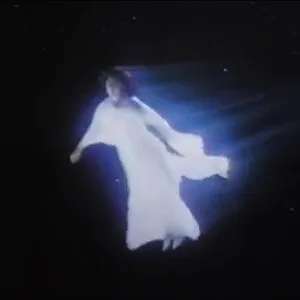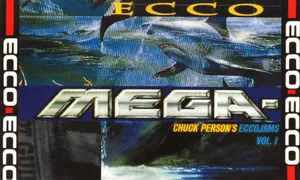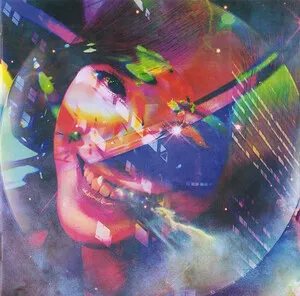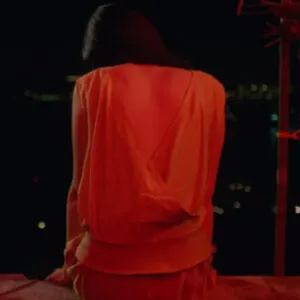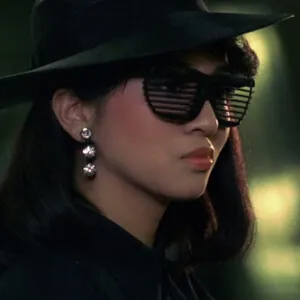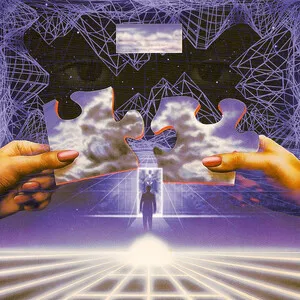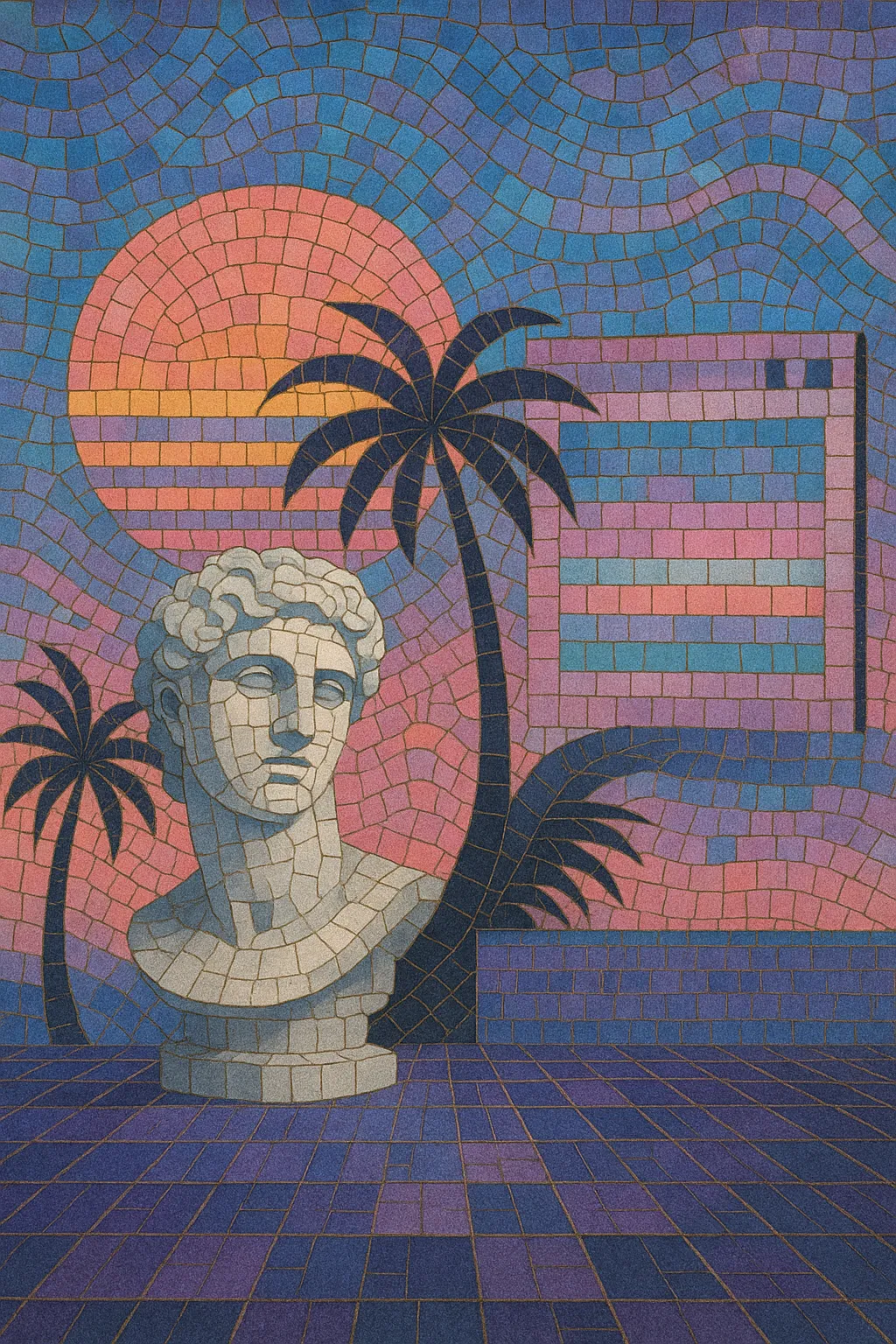
Vaporwave is an internet-born microgenre and visual aesthetic that repurposes late‑20th‑century commercial sound—mu zak, smooth jazz, soft rock, synth‑pop, city pop, and corporate training tapes—into hazy, slowed, and looped collages. Its sound foregrounds pitched‑down samples, heavy reverb, tape hiss, vinyl crackle, and dreamy pads to evoke a mood between satire and sincere nostalgia.
Beyond music, vaporwave is inseparable from its graphic language: Greco‑Roman busts, Japanese text, retro operating systems, chrome logos, palm trees, neon gradients, and “mall culture” architecture. The result feels like a haunted shopping mall: part critique of consumer capitalism, part wistful memory of media and retail spaces from the 1980s–2000s.
Tempos are typically slow (roughly 60–90 BPM), harmonies tend toward lush seventh and extended chords, and rhythms range from barely perceptible loops to minimal, gated drum programming. Many tracks are short, vignette‑like studies in texture and mood.
Vaporwave’s sonic template coalesced from several internet and cassette‑underground currents. Daniel Lopatin’s Chuck Person’s Eccojams Vol. 1 (2009) looped and pitch‑shifted fragments of 1980s pop, establishing the slowed, memory‑burned “eccojam” approach. James Ferraro’s Far Side Virtual (2011) reframed ringtones and corporate MIDI sounds into a glossy critique of digital life. Vektroid’s Floral Shoppe (as Macintosh Plus, 2011) canonized the signature vaporwave sound—pitch‑down, lush reverb, and emotionally ambivalent nostalgia—alongside a defining visual style.
Tumblr blogs, Bandcamp labels, and YouTube channels rapidly spread the aesthetic. Micro‑labels (e.g., Beer on the Rug, Dream Catalogue) and prolific producers (Luxury Elite, INTERNET CLUB, 猫 シ Corp.) cultivated substyles: mallsoft (mall/PA ambience), late‑night lo‑fi muzak loops, and more dance‑leaning edits. The genre’s critique of consumerism and fascination with obsolete media (VHS, CRT, Win95 UI) bred an instantly recognizable meme‑ready identity.
Producers fused trap drums and bass with vapor textures (vaportrap) and, in reaction, forged darker anti‑vapor offshoots like hardvapour. Meanwhile, 2814 (HKE + t e l e p a t h) pushed long‑form, cinematic ambient vaporwave, influencing dreampunk and slushwave. Viral video edits (e.g., “Simpsonwave”) and 24/7 “A E S T H E T I C” streams broadened the audience while blurring lines with chillhop/lo‑fi scenes.
Scene‑building accelerated with festivals like 100% Electronicon (2019–) and a resurgence of cassette/vinyl issues. New branches—barber beats, vapornoise, and regionally inflected variants like sovietwave—expanded the palette. While sampling controversies persist, many artists now complement sample flips with original composition and sound design, ensuring vaporwave’s continued evolution as both critique and comfort.

